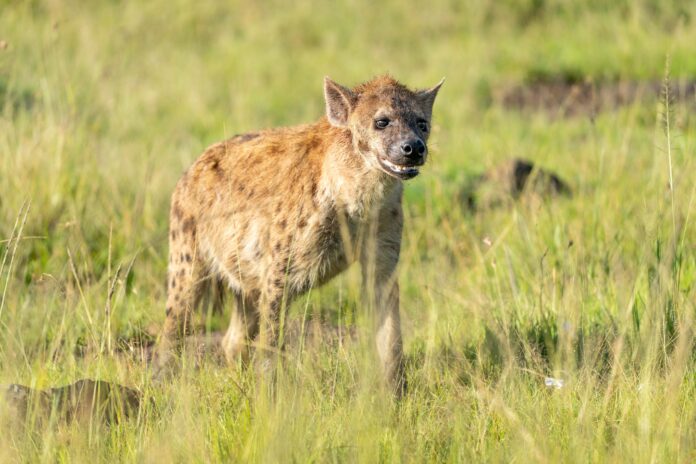Introduction to Hyena Laughter
When you think of a hyena, chances are you imagine a scrappy, cackling creature darting across the African savannah. Their high-pitched, almost maniacal giggle has made them one of the most recognizable — and misunderstood — animals in the world. But here’s the truth: hyenas don’t actually laugh because something is funny. Their vocalizations serve complex social, emotional, and survival functions.
The “laughing hyena” nickname may have cemented their place in pop culture, but the real story is even more fascinating. From clan communication to hierarchy disputes, their laughter is a sophisticated language of its own.
The Popular Image of the “Laughing Hyena”
For centuries, hyenas have been viewed as cunning tricksters. Folktales often portray them as scavengers who laugh at their own mischief. Cartoons and movies — most notably The Lion King — reinforced this image, making it seem like hyenas are constantly chuckling at some inside joke.
However, this portrayal is only loosely based on reality. In truth, their giggle is a survival tool, not a sign of humor.
How Pop Culture Shaped Our View of Hyenas
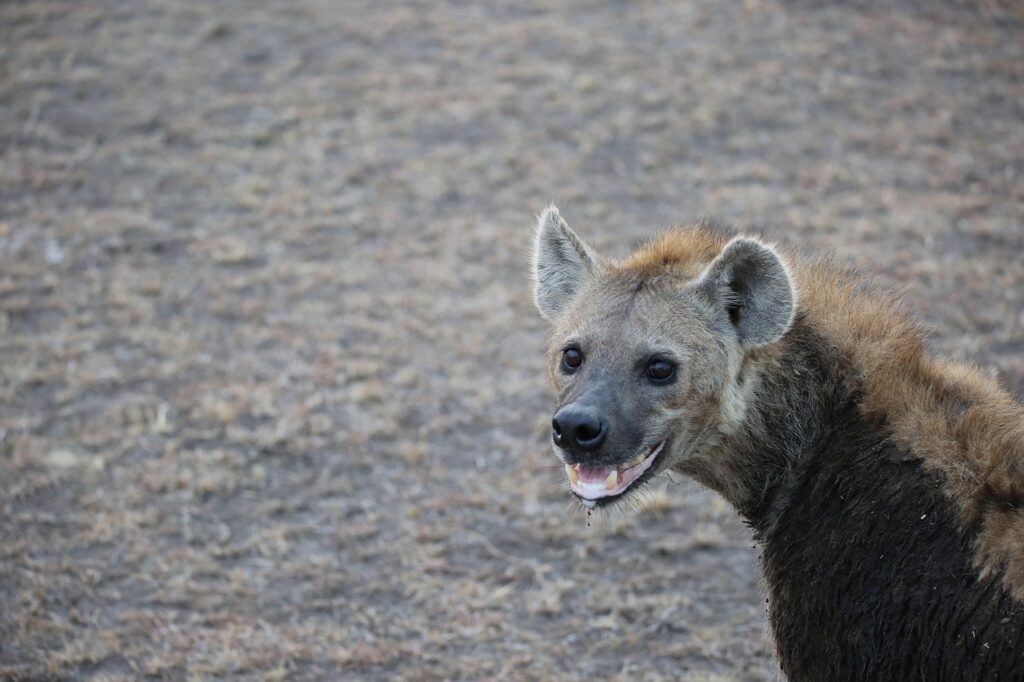
The cackling sound of hyenas was irresistible to filmmakers and storytellers. Over time, the public began to associate hyena laughter with mischief, danger, or even insanity. While these portrayals are entertaining, they often overlook the science behind the sound. In the wild, a hyena’s “laugh” can mean anything from “back off” to “come help me” — hardly the punchline to a joke.
What Does Hyena Laughter Really Sound Like?
The Unique “Giggle Call”
Hyena laughter, more accurately called a “giggle call,” is a high-pitched, staccato series of sounds that can carry over long distances. Spotted hyenas — the species most famous for this call — produce it by forcing air through their vocal cords in quick bursts.
How It Differs from Human Laughter
While human laughter usually signals joy, hyena giggles are far more versatile. They can be signs of tension, submission, or even a request for help from other clan members. Imagine if every time you laughed, it meant you were either stressed, hungry, or warning someone — that’s closer to a hyena’s reality.
Why Do Hyenas Laugh? The Science Explained
Hyena laughter isn’t a random burst of noise. It’s a highly evolved communication tool shaped by millions of years of survival in Africa’s grasslands. Researchers studying spotted hyenas (Crocuta crocuta) have found that their giggles serve specific social and functional purposes within their clans.
Communication Within the Clan
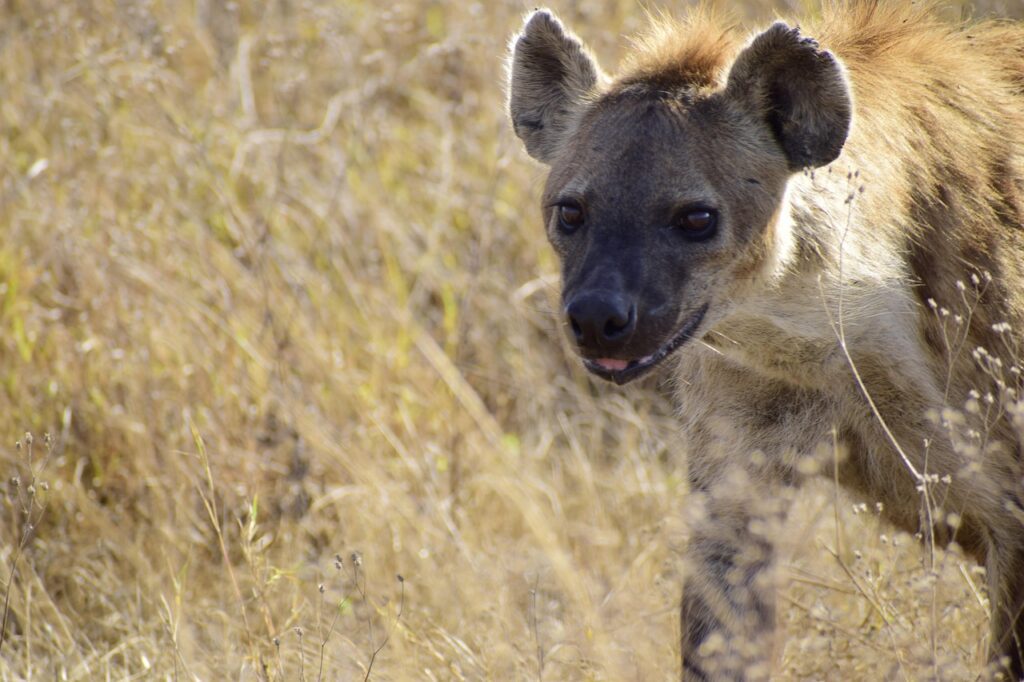
Hyenas live in large, complex social groups called clans, which can have up to 80 members. In such large communities, maintaining social cohesion is crucial. The giggle acts like a “walkie-talkie” for hyenas, helping them send quick messages over long distances. A giggle might signal:
- “I’ve found food, but I need backup.”
- “I’m in trouble — come help me.”
- “I acknowledge you, but I’m not challenging you.”
Signaling Social Status and Hierarchy
Within hyena clans, there’s a strict pecking order. The pitch and pattern of a giggle can reveal the caller’s social rank. High-ranking hyenas may use giggles to assert dominance, while low-ranking individuals might use a softer giggle to signal submission and avoid conflict.
Expressing Stress or Excitement
Contrary to the myth, hyenas don’t laugh because they’re amused — they often laugh when they’re frustrated, anxious, or competing for food. A hyena trying to eat while surrounded by higher-ranking clan members might giggle to indicate it’s stressed but still willing to cooperate.
Types of Hyena Vocalizations
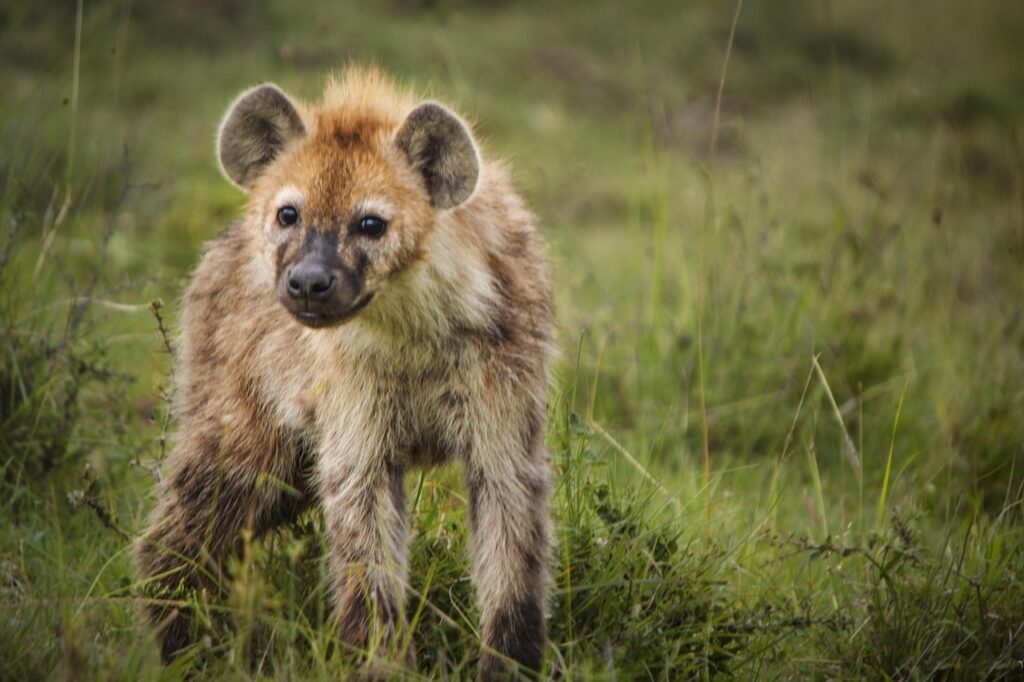
While the “laugh” gets all the attention, hyenas have a full vocal repertoire. Each sound plays a specific role in their social life.
Whoop Calls
A whoop is a deep, rising call used to announce presence over long distances. It’s a way to say, “I’m here” to other clan members or warn intruders.
Grunts and Growls
Grunts and growls are close-range communication tools, often used during feeding or confrontations. They can signal aggression, defense, or mild irritation.
Giggles and Their Meanings
Giggles — the so-called “laughter” — are rapid, high-pitched bursts. Unlike whoops and growls, they are short-distance signals, often used during feeding disputes or play. Researchers have discovered that giggles can even encode individual identity, meaning other hyenas can recognize who’s “laughing.”
Myths and Misconceptions About Hyena Laughter
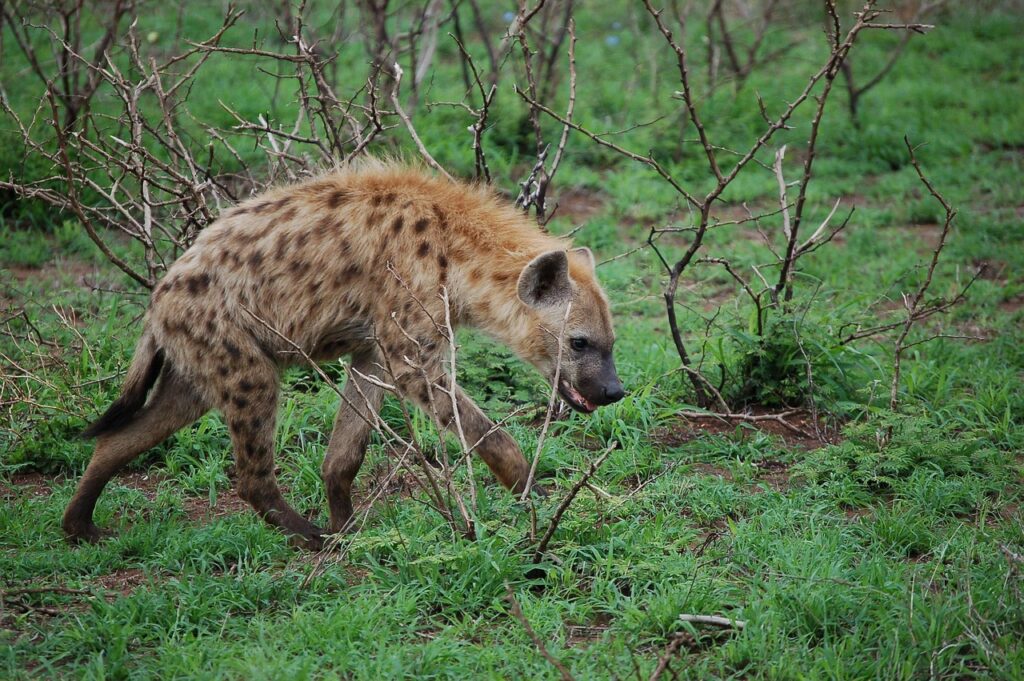
The “Evil Villain” Trope in Movies
From The Lion King to countless nature documentaries, hyenas have been depicted as sly, untrustworthy characters. In reality, they are skilled hunters and critical to the ecosystem’s balance. The villainous laugh is just dramatic license.
Do Hyenas Laugh Because They’re Happy?
No. Unlike humans, hyenas do not associate their giggle with humor or joy. Their laughter is usually functional — a way to solve problems, avoid fights, or recruit allies.
Hyena Social Behavior and Its Connection to Laughter
The Role of Laughter in Feeding Behavior
Hyena feeding is a competitive affair. When a carcass is found, clan members rush to feed. The giggle helps lower-ranking hyenas negotiate space at the table without provoking dangerous fights.
How Laughter Affects Pack Cooperation
Interestingly, giggling can encourage cooperation during hunts. A distressed giggle may rally the clan to help overpower prey or defend a carcass from lions or wild dogs.
Evolutionary Reasons Behind Hyena Laughter
Why Giggles May Have Developed as a Survival Tool
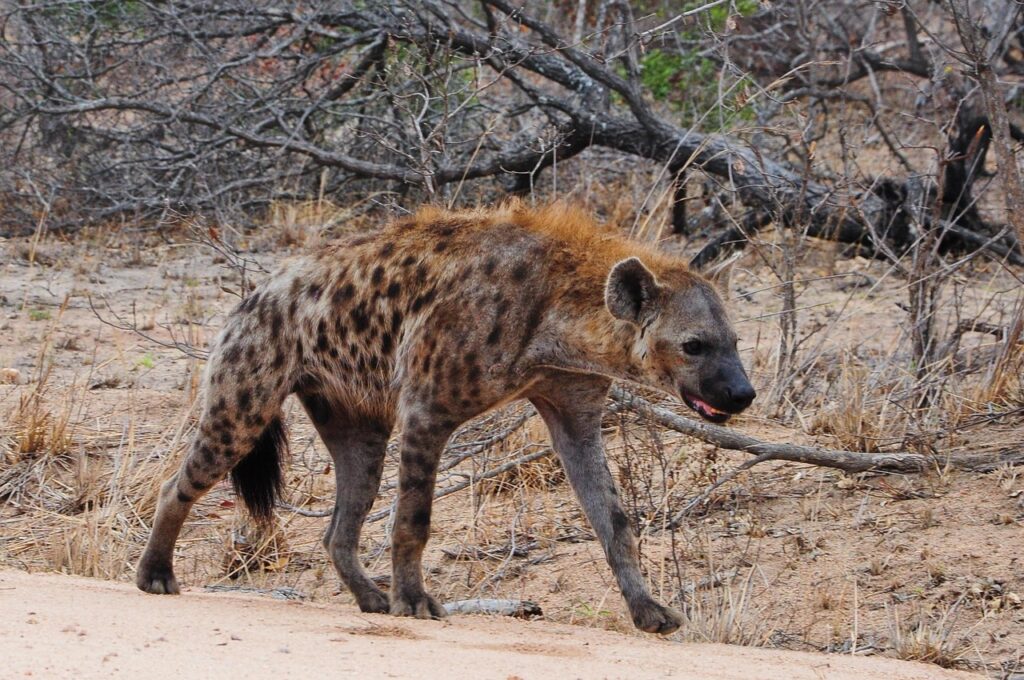
Over time, vocal signals like the giggle likely evolved because they helped hyenas coordinate group actions in open savannahs where visual contact isn’t always possible.
Laughter as a Warning or Alert Signal
Sometimes, a giggle warns clan members of approaching danger. The urgent tone can prompt others to retreat or regroup without attracting unwanted attention from predators.
Comparing Hyena Laughter to Other Animal Sounds
Hyena giggles might sound unique, but they’re not the only animal vocalizations that humans interpret as laughter.
Birds That Mimic Laughter

Some bird species, like the kookaburra, produce calls that resemble human laughter. While the kookaburra’s call is mainly territorial, it shows that laughter-like sounds can evolve for practical purposes in different species.
Dolphins and Their “Clicks” as Communication
Dolphins don’t laugh, but their high-frequency clicks and whistles are just as sophisticated as hyena giggles. Both are examples of non-human animals using complex sounds to convey nuanced social information.
Scientific Studies on Hyena Laughter
Research by Biologists on Vocalization Patterns
Researchers, such as Nicolas Mathevon and colleagues, have studied the acoustic structure of hyena giggles. Their findings reveal that each giggle carries information about the caller’s age, social status, and emotional state.
What Acoustic Analysis Reveals
Acoustic spectrograms show that giggle patterns are not random — they have a consistent rhythm and pitch range. This means hyenas might understand far more from a giggle than we realize, making their vocal language among the most complex in the animal kingdom.
Conservation and the Importance of Understanding Hyena Behavior
Protecting Hyenas in the Wild
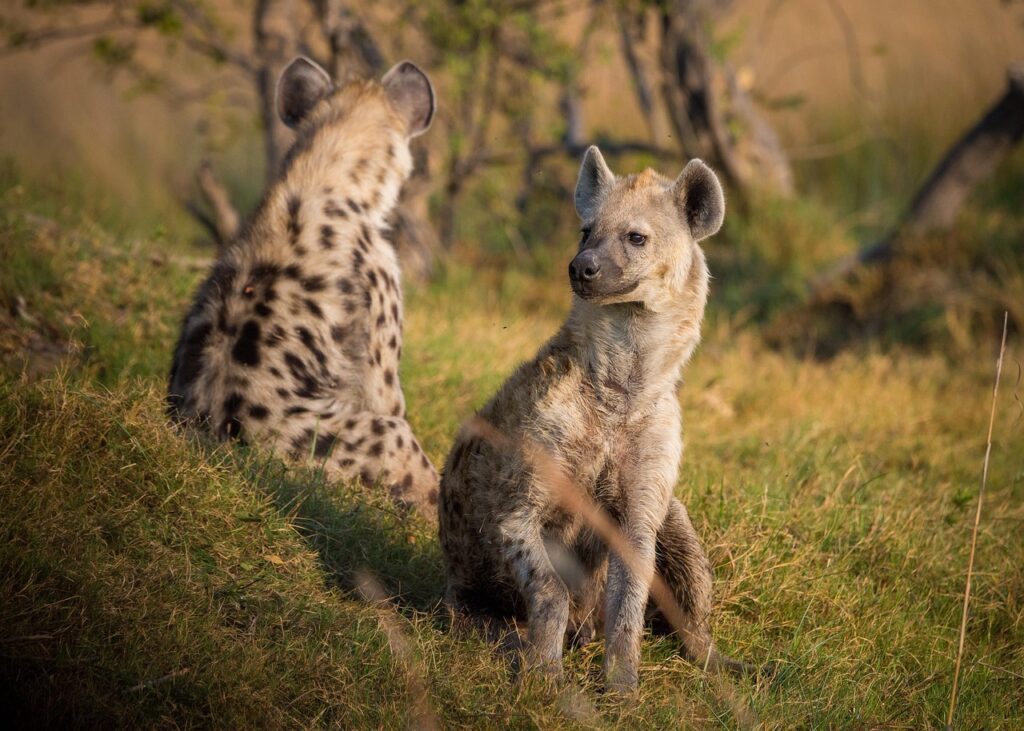
Spotted hyenas are not endangered, but habitat loss, hunting, and negative public perception threaten their populations. By understanding their communication, conservationists can develop more effective protection strategies.
Why Misunderstanding Them Hurts Conservation Efforts
If people see hyenas only as villains, they may be less willing to protect them. Correcting myths about hyena laughter can help change public attitudes and encourage coexistence between humans and wildlife.
For more on African wildlife protection, the African Wildlife Foundation offers resources: awf.org.
FAQs About Hyena Laughter
1. Do all hyenas laugh?
No. Only spotted hyenas (Crocuta crocuta) produce the distinctive giggle. Other hyena species communicate differently.
2. Is hyena laughter contagious like human laughter?
Not in the same way. While one giggle can prompt others to respond, it’s more about communication than shared emotion.
3. Can hyenas laugh without being in a group?
Yes, but it’s rare. Giggles are usually social signals, so solitary hyenas laugh less often.
4. Are hyenas more closely related to cats or dogs?
Surprisingly, hyenas are more closely related to cats than to dogs, despite their dog-like appearance.
5. Can you mimic a hyena’s laugh?
Some skilled mimics and researchers can approximate it, but hyenas use subtle pitch changes that are hard to reproduce accurately.
6. How far can a hyena’s laugh travel?
Under ideal conditions, a giggle can travel up to 1 kilometer, but its purpose is mostly short-range communication.
Conclusion: The Real Story Behind the Hyena Giggle
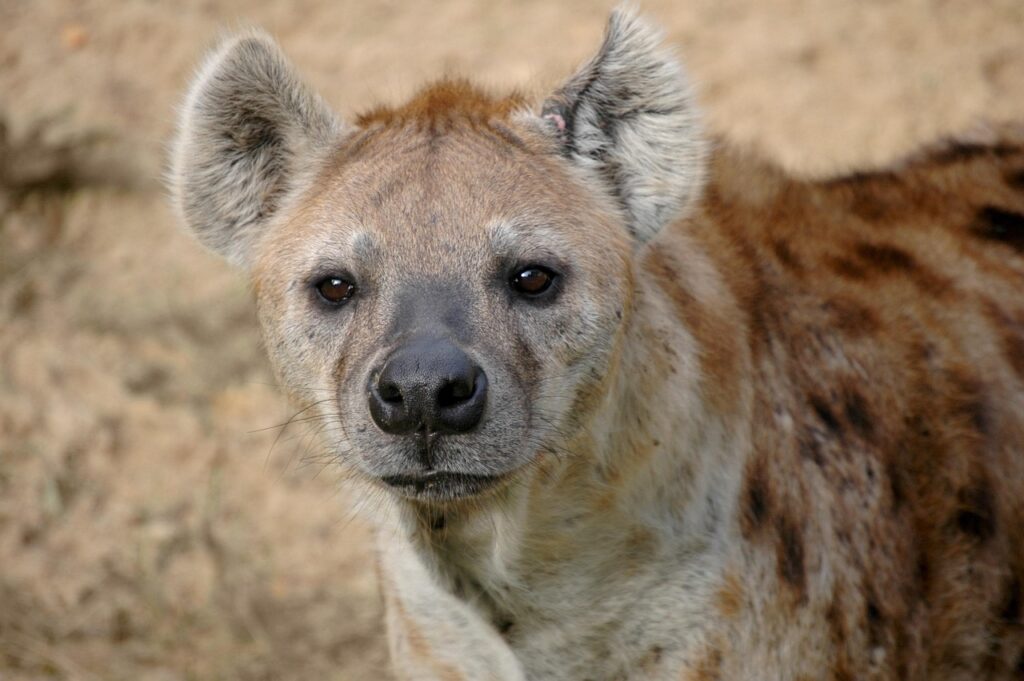
The famous “laugh” of the spotted hyena is not a joke — it’s a window into one of the most complex animal communication systems in nature. From signaling stress to coordinating hunts, hyena giggles are a finely tuned social tool that has helped this species survive for millions of years.
By looking beyond the stereotypes and pop culture myths, we can appreciate the hyena for what it truly is: a highly intelligent, socially complex, and ecologically vital predator whose “laughter” is really a language of survival.
Final Word: Understanding why hyenas laugh isn’t just fascinating — it’s a reminder that animal sounds, no matter how funny they seem to us, often have deep and meaningful purposes in the wild.

